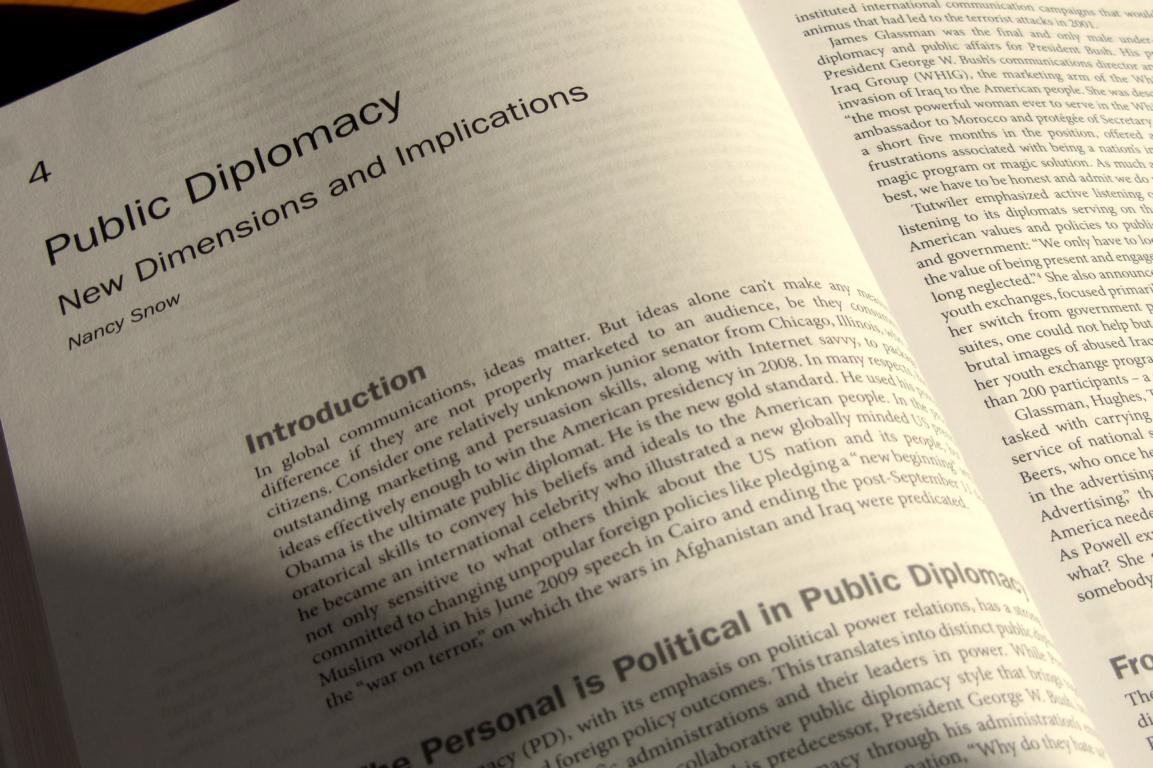Public diplomacy is on the rise, writes Nancy Snow in Global Communication: Theories, Stakeholders and Trends (John Wiley & Sons, 2014). While not directly linked to place branding – at least not from a management or marketing perspective, public diplomacy is a term closely linked to nation branding. Snow’s book chapter offers a useful introduction, history and outlook on the way ahead for public diplomacy.
From old to new public diplomacy
Public diplomacy, while rooted in social influence, rhetoric, persuasive communication, international exchange and engagement, nowadays refers to “global communication efforts to inform, influence, and engage global publics in support of national interests.” (p. 67)
Let’s be clear though: “There is no one accepted definition of what public diplomacy is. Rather, every nation has its own definition in line with its stated goals and objectives.” (p. 70)
Traditional diplomacy, according to Snow (2014), “is about relationships between state officials. It is top-down, elite, and driven by government officials who conduct business and negotiation privately, and have little contact or communication with the public.” (p. 67)
Public diplomacy efforts, on the other hand, “are designed to be transparent in their mission and open-sourced in their function. It is the support of the overseas public, in particular non-official target groups, individuals and organizations, that a nation seeks, not just that of an individual head of state or foreign minister.” (p. 67)
Public diplomacy is a global process oriented toward diplomacy to publics.
Open communication, interaction, and reaching out to publics through news and opinion management are expected in public diplomacy. Unlike traditional diplomacy, which involves a small network of trained and educated individuals, public diplomacy’s mission is open to everyone. (Snow, 2014, p. 67)
New public diplomacy: the way ahead
New public diplomacy (NPD) is about public-to-public communication between NGOs, private citizens, practitioners. It involves an active and participatory public, focuses on dialogue and exchange, and is generally more long-term regarding behavioral change (Snow, 2014, p. 71)
Snow (2014) foresees a future where public diplomacy “will not be centered on the United States but defined by global civil society actors working both with and without government partners. It will be more personal, rather than being directed by the nation-state or government.” (p. 77)
In the future, public diplomacy will become more ad-hoc, spontaneous, and chaotic rather than state-room formal, as new social networks emerge to challenge the growing impotence of the nation-state system to resolve global conflicts or to fairly represent the aspirations of citizens. (Snow, 2014, p. 78)
“We are in the age of a new mindset in public diplomacy. The focus has shifted from traditional one-way informational diplomatic objectives to two-way interactive public exchanges… Public diplomacy today is more personal than ever and it is likely that collaborative approaches in public diplomacy will become more dominant in the twenty-first century as nations realize that do-it alone management is neither practical, effective, nor affordable.” (Snow, 2014, p. 78)
Cite as:
Snow, N. (2014). Public Diplomacy: New Dimensions and Implications. In T.L. McPhail (Ed.), Global Communication: Theory, Stakeholders, and Trends (Fourth ed., pp. 64-79). Chichester, United Kingdom: John Wiley & Sons, Inc.
You might also be interested in our list of recommended reading for place branding professionals.


